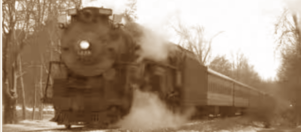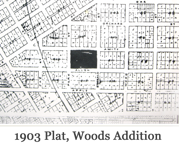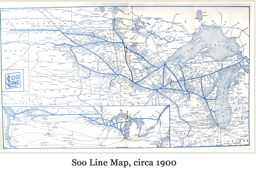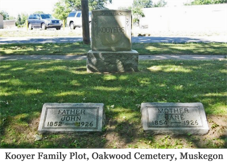Kooyer Farm






Kooyer History
To the best of our knowledge, Hendrik Jan Kooijers, Achterhoek seceder, Dutch immigrant, who arrived in New York on September 17, 1846, ultimately marrying Gerritje Damkot and settling in Holland, Michigan, died in 1852 at the age of 26 of causes unknown. His daughter, Gezina, was three-years-old, his son, Jon, only a few months.
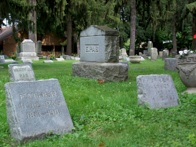
Gezina and Jon, raised in the Esselinkpas home, kept the Kooijers name and the conservative seceder tradition. Eleven-year-old Gezina and eight-year-old Jon appear in the 1860 US Census, along with their younger half-siblings. After growing up, Gezina married Nies Nies and Jon married Jantje (Jane) Mulders. He also modified his name from Jon Kooijers to John Kooyers. His three oldest sons, Henry John born in 1874, Klaas Willem born in 1876, and Garrett born in 1878, would further modify their last name by dropping the final “s.” John and Jane, along with their three sons, appear in the 1880 census, living in Allegan County (Manlius Township), with John employed as a farmer.
Two years later, when William (born Klaas Willem after his maternal grandfather) was only six years old, the family moved to a farm near Reeman, Michigan. The farm was located one-quarter mile from a farm belonging to Jan Tanis. At the time the Kooyers moved, Jan Tanis’ daughter Katie was four-years-old. William and Katie would have grown up together in the Reeman community.

Plat of Reeman area illustrating location of Kooyers and Tanis farms.
Men of the Railroad (Henry, William and Garrett)
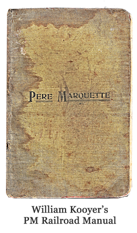
Man of Company E (Frederick)
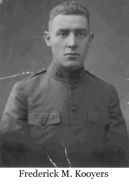
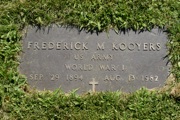
After the war, Fred returned to Muskegon and married Blanche Marie Bouchard on October 11, 1919 at St. Jean Baptiste Church. He worked in the drycleaning business for 56 years. After Blanche died in 1975, he moved to the Michigan Veterans’ Facility in northeast Grand Rapids, where he resided until his death on August 13, 1982. He is buried with his wife in St. Mary’s Cemetery in Muskegon, about two miles from where his parents are buried.
Man of the Cloth (Jacob)
Jacob Kooyers, John and Jane’s tenth child, was born in August, 1896, while the family was living in the Fremont area. Only three-years-old when the family moved to Orchard Street, Jacob grew up in Muskegon, went to Calvin College in Grand Rapids, and then on to Westminster Seminary in Allentown, PA. In the early 1930s, Jacob, his wife, Alice Margaret Van Spronsen, and their children moved to Wisconsin where they pastored a series of Presbyterian churches over the next decade. They began in Athens and Goodrich and by 1936, had moved to the small town of Oxford, WI, just east of the Wisconsin Dells. In 1939, the family moved seventy miles to the northwest, where Jacob was responsible for two churches in Hixton and Sechlerville. In 1943, the family moved north to Superior, WI, where they would remain until after the war.
In December of 1936, Rev. Jacob Kooyers had taken a long train ride to Sunnyvale, CA, to officiate at the wedding of a sibling and came back favorably impressed with the milder climate. From that time forward, the possibility of some day moving to California was never far out of mind and after World War II, Jacob and Alice did just that, relocating their family to Mendocino, north of San Francisco. They eventually retired to San Jose where Jacob died in 1983, and Alice in 1987. They are both buried in a cemetery on the south side of San Jose. Their son, Orneal Kooyers, followed his father’s example of ministry and shares more about growing up at this link.
Man of Mystery (Benjamin)
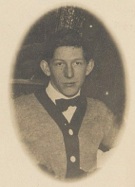
******************************************
Tanis History
To the best of our knowledge, the earliest Tanis on record was named Jan Tanis and he was born in Essex England in 1503, six years before the birth of John Calvin. His son, Jacob Tanis, emigrated from England to the Netherlands in the mid-1500s, establishing roots in Ouddorp, Overflakkee. Jan Tanis’s great-great-great-great-great-great-great grandson and namesake was Jan Maartensz Tanis. He was born on March 18, 1834 and when he was 15-years-old, he emigrated with his parents from the Netherlands to New Jersey, settling in Manchester Township in Passaic County. The 1850 census shows him working on the farm of Richard Van Houten. Jan Maartensz had four siblings. Two brothers, both named Cornelis, died prior to immigration. A brother, Maarten, and sister Cornelia, grew to adulthood in New Jersey. Interestingly, they married siblings. On November 11, 1858, Jan Maartensz Tanis married Pieternella Breen, also a Dutch immigrant, in Passaic County, near what is now Paterson, NJ.
Ten years after immigration and one year after they were married, Jan Maartensz Tanis and wife, Pieternella (“Nella”), had their first of many sons, Jacob Jan, who died when he was only 8 months old. Their names appear on the 1860 Census in Passaic County, New Jersey. They named their next child, also a boy, Jacob Jan, as well. He was born in 1861 and a third child (son) was born the next year. They named him Cornelius Jan. Before the Civil War was over, the family moved from New Jersey to Drenthe, MI and then on to the Zeeland area. More sons and a couple of daughters, each named Ange (one living nine months and the other nineteen months) were born. Shortly before Kate (who was the fourteenth child) was born, the Tanis family moved up to Sheridan Township in Newaygo County. Two more sons, Nicholas and Lynnard, were born after Kate, and then Maggie came along. Maggie was the last child in the large family and became Kate’s only surviving sister. Consequently, the two of them became very close, with Maggie and her children making trips to the Farm to see Kate in later years. Of John and Nella’s 17 children, 12 survived to adulthood. Father John died in 1904, only two years after Kate married. Mother Pieternella died in 1917. They are buried in the Reeman Cemetery.


******************************************
William and Kate History
On November 27, 1902, Klaas Wiilem Kooyers (Americanized to William Kooyer) married Kate Tanis in Reeman, MI, at the home of her parents-- in the same house in which Kate had been born (of note, older brother Martin, had married only the month before). The Rev. J. R. Brink officiated. According to the marriage record, William’s brother, Garrett, and Kate’s sister, Maggie, were their official witnesses. Once married, William and Kate settled for a time in Muskegon. When their first child, Andrew, was only 10 months old, they purchased a home just down Orchard Street from William’s parents. The property deed on file at the Muskegon County Court House lists the sellers as John and Rena Vander Laan and the sale date as August 12, 1905. This was the period of time when William worked on the railroad.
Whether William Kooyer had always wanted to work the land, whether he heard the call of his earliest ancestors who were farmers, whether he and Kate had heard of good property deals in northern Michigan along the Pere Marquette Railroad for which he worked, or whether this young couple simply possessed the adventurous spirit of their immigrant forebears, they decided in 1908 to sell the home they had purchased at a price of $550 from the Vander Laans only four years previously, for “$1.00 and other valuable considerations.” And fittingly, by train, in the cold December of that year, they moved north to Ellsworth, MI, their second son, John, safely nestled in Kate’s womb.
Early Days in America


